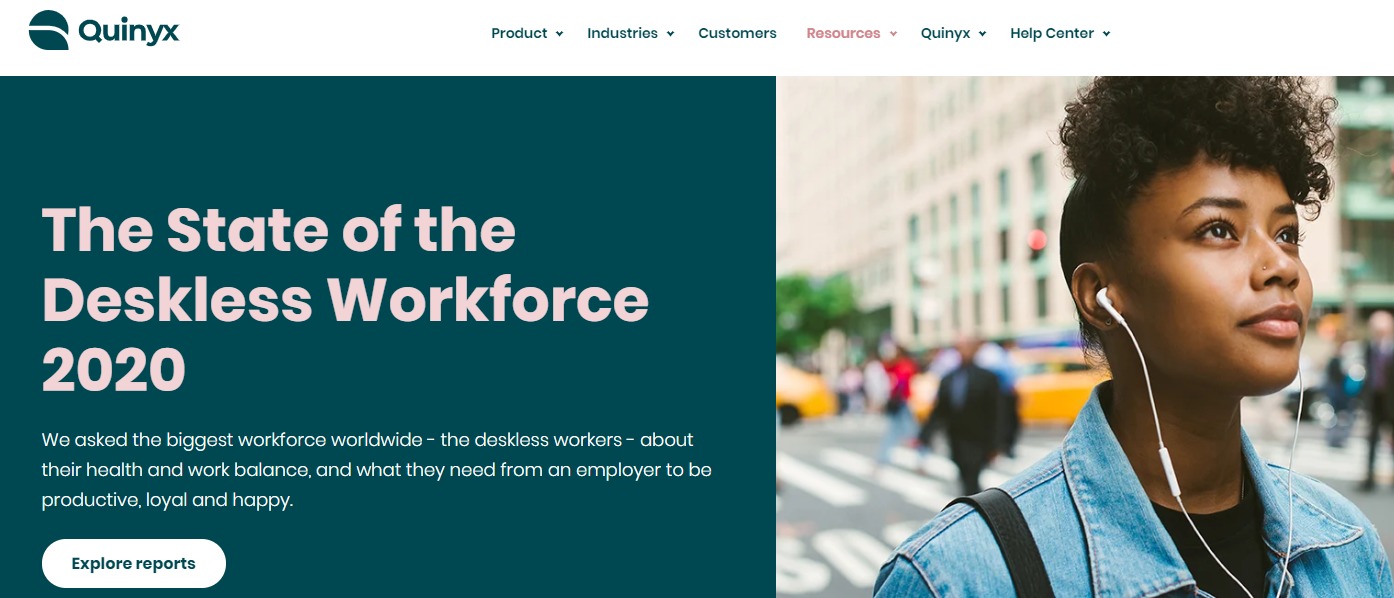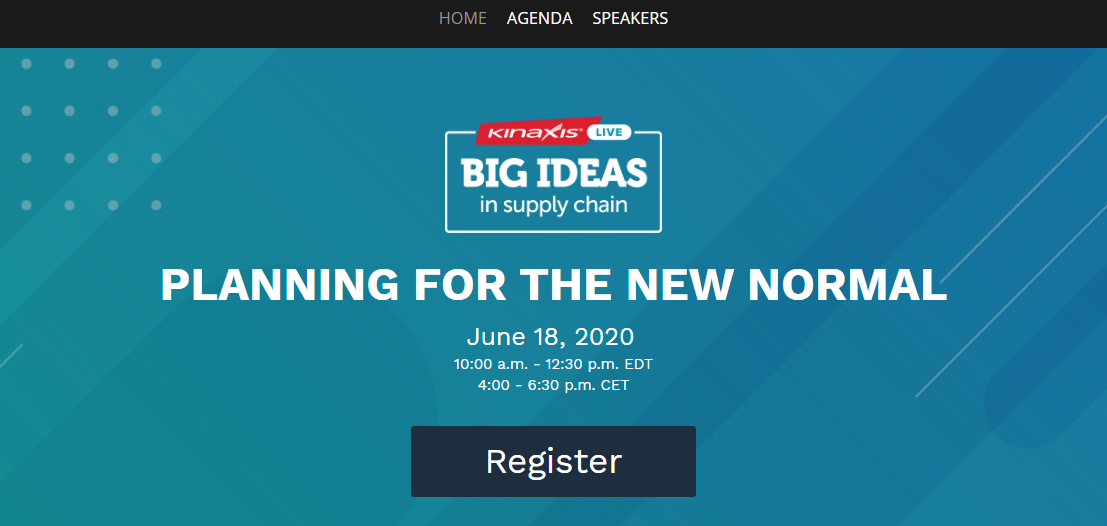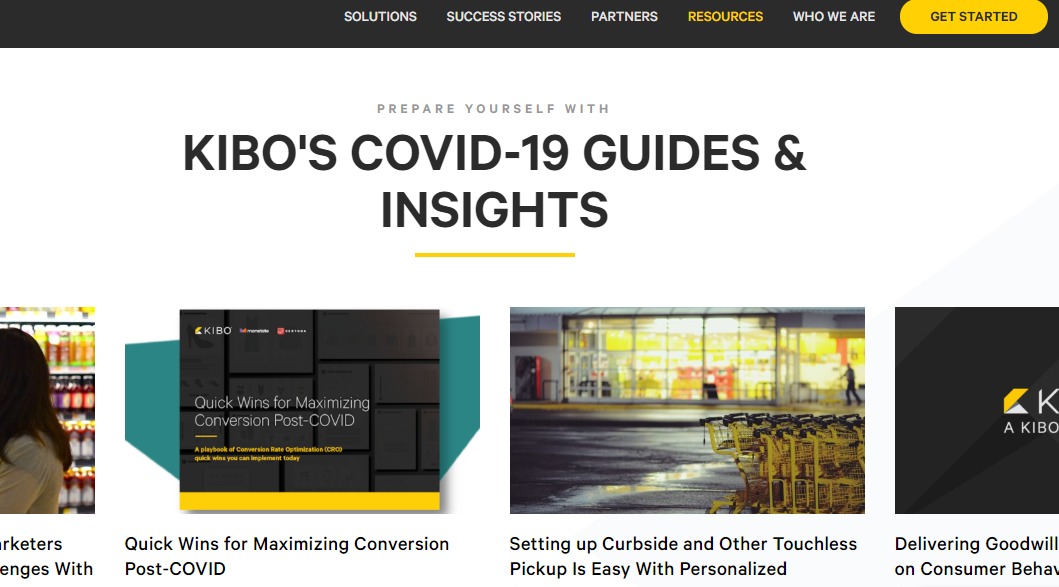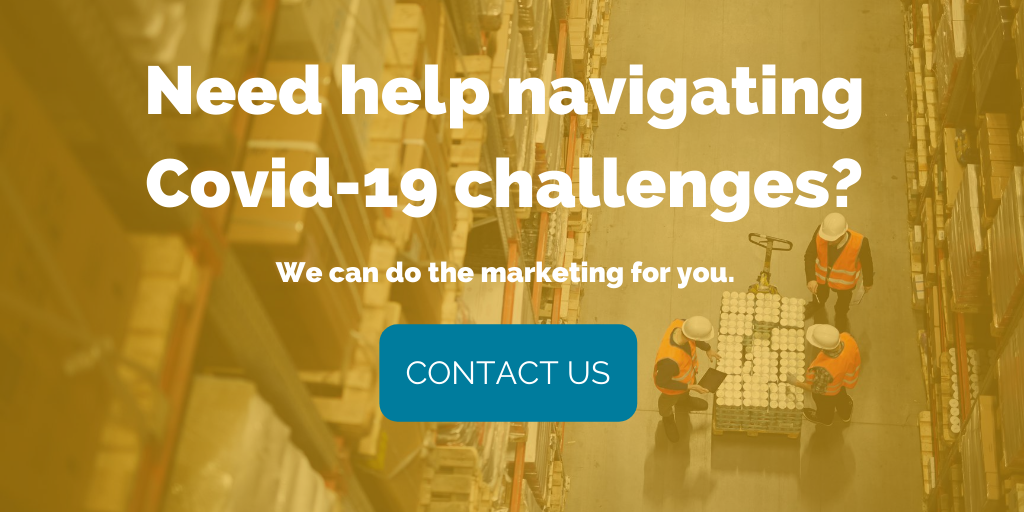
by Jennifer Hart Yim | Jan 8, 2025 | Marketing, Packaging
We’re showing you exactly how packaging companies we’re working with are using account-based marketing (ABM) to increase market share, shorten sales cycles, and win more strategic accounts. Consider this a packaging professional’s blueprint for target account success.
What is Account-Based Marketing for the Packaging Industry?
Account-based marketing is a strategic approach that focuses marketing and sales resources on specific high-value accounts rather than broad market segments. This means targeting key accounts with personalized campaigns that address their unique packaging challenges, sustainability goals, and innovation needs.
Here’s an example of what that could look like for a packaging marketer:
If consumers in Brazil begin demanding smaller milk carton sizes to reduce food waste, packaging companies might use traditional marketing to broadly promote “flexible filling solutions” to all dairy manufacturers. Instead, an aseptic packaging provider could use account-based marketing to stand out and create a highly targeted campaign for Nestlé. This campaign could specifically address Nestlé’s need to fill multiple carton sizes (500ml, 750ml, and 1000ml) for their Molico and Ninho UHT milk brands on a single production line.
Unlike traditional marketing, ABM delivers:
- 2x higher engagement rates with technical decision-makers
- 42% reduction in packaging qualification cycles
- 27% increase in contract values
- 35% improvement in customer retention
How to Build a Winning ABM Strategy
1. Define Your Ideal Customer Profile (ICP)
Success in ABM starts with identifying the perfect packaging customer. Here are some ways you can start to categorize their characteristics:
Industry Focus:
- Food and beverage manufacturers
- Pharmaceutical companies
- Consumer packaged goods (CPG)
- Industrial products
- Chemical companies
- E-commerce retailers
- Automotive suppliers
Operational Characteristics:
- Production volumes and capacity
- Geographic footprint
- Technical requirements
- Regulatory frameworks
- Sustainability commitments
Business Indicators:
- Annual packaging spend
- Growth trajectory
- Innovation appetite
- Quality standards
- Compliance needs
2. Select and Prioritize Target Accounts
Develop a tiered approach to account selection:
Tier 1: Strategic Accounts
- Major CPG companies
- Global pharmaceutical manufacturers
- Leading food and beverage brands
Tier 2: Growth Accounts
- Regional packaging buyers
- Emerging brands
- Contract manufacturers
Tier 3: Scale Accounts
- Local manufacturers
- Specialty product makers
- Start-up brands
3. Map the Packaging Decision-Making Unit
Here’s where you’ll determine who you’ll be targeting. Identify and engage with those key stakeholders. They could be part of any of the following functions:
Technical Team
- Packaging Engineers
- R&D Directors
- Quality Assurance Managers
Commercial Team
- Procurement Directors
- Supply Chain Managers
- Sustainability Officers
Executive Level
- Operations Directors
- Innovation Leaders
- C-Suite Decision Makers
Content for Account-Based Marketing for the Packaging Industry
Technical Content
Develop materials that showcase your packaging expertise:
- Barrier performance studies comparing EVOH vs. metallized films for snack packaging
- Technical specifications for child-resistant pharmaceutical blister packs
- FDA compliance guides for direct-food-contact packaging materials
- Innovation roadmaps for smart packaging with NFC technology
- Sustainability impact reports on PCR content in HDPE bottles
Commercial Content
Create content that drives packaging business decisions:
- Cost calculators comparing glass vs. PET bottles for beverage lines
- Production efficiency studies for servo-driven cartoning machines
- Risk analyses of aluminum foil supply chain disruptions
- Market trends in mono-material flexible packaging adoption
- Benchmarks of European vs. US sustainable packaging regulations
Implementing Your Packaging ABM Program
Essential Tools and Technologies
Invest in the right technology stack:
- ABM platforms for account targeting
- CRM systems for relationship management
- Marketing automation for personalization
- Analytics tools for performance tracking
- Technical collaboration platforms
Multi-Channel Engagement Strategy
Coordinate your outreach across channels:
- Technical consultations
- Innovation workshops
- Sustainability forums
- Digital demonstrations
- Industry events
- Direct mail campaigns
Measuring the Success of Account-Based Marketing for the Packaging Industry
Key Performance Indicators
Track these critical metrics:
- Account engagement scores
- Technical trial conversion rates
- Sales cycle duration
- Contract win rates
- Customer lifetime value
- Innovation adoption rates
ROI Calculation Framework
Measure your ABM investment returns:
- Cost per account engagement
- Revenue per target account
- Marketing qualified account (MQA) conversion
- Technical qualification success rates
- Long-term contract values
Common ABM Challenges (+ Solutions) Packaging Professionals Face
Challenge 1: Long Technical Qualification Cycles
Example solutions:
- Provide rapid prototyping of thermoformed packages using 3D-printed molds
- Offer accelerated shelf-life testing for new barrier materials
- Supply preliminary migration testing data for food-contact materials
- Create digital twins of packaging lines for virtual testing
Challenge 2: Multiple Stakeholder Alignment
Example solutions:
- Develop sustainability scorecards that satisfy both procurement and ESG teams
- Create ROI models that connect packaging automation with labor savings
- Build material transition roadmaps that align with corporate sustainability goals
- Provide comparative LCA (Life Cycle Assessment) data for different packaging options
Challenge 3: Complex Approval Processes
Example solutions:
- Map decision workflows
- Create milestone-based content
- Offer phased implementation plans
Top Tips for ABM Success
- Start with a pilot program focusing on 5-10 key accounts
- Invest in technical expertise and support
- Align sales and technical teams early
- Focus on sustainability and innovation
- Measure and adjust continuously
How to Get Started
- Assess your current account relationships
- Identify your top 10 target accounts
- Map stakeholders and decision processes
- Develop your technical content strategy
- Implement tracking and measurement systems
Questions We’ve Gotten from Packaging Professionals About ABM
Q: Can you give me an example of how ABM is different from traditional packaging marketing?
A: While traditional marketing might broadly promote your shrink sleeve capabilities to all beverage companies, ABM would create a targeted campaign specifically for Coca-Cola’s Southeast Asia expansion, addressing their specific need, sustainability, and localization requirements. This focused approach delivers personalized engagement at every level of their decision-making process.
Q: What budget should packaging companies allocate to ABM?
A: The most successful ABM programs are funded at about 15-25% of the total marketing budget. For example, a flexible packaging manufacturer might allocate $200,000 annually to target 10 key CPG accounts, with roughly $20,000 per account for technical content development, prototype creation, and specialized testing programs.
Q: How long does it take to see results?
A: You’ll start to see the needle move within 3-6 months. For example, you might notice increased participation in packaging innovation workshops or material qualification trials. Significant revenue impact typically occurs within 9-12 months, as seen in new packaging format adoptions or multi-year supply agreements.
Q: Which metrics matter most?
A: Focus on account engagement scores, technical qualification rates, sales cycle duration, and contract values.
Q: How can smaller packaging companies implement ABM?
A: Start with a focused program targeting 3-5 key accounts and leverage digital automation tools for efficiency and AI tools to scale.
Want to change how your packaging company targets high-value prospects and land major accounts? We’re happy to help you get started. Get in touch.
Read more:

by Elizabeth Hines | Jan 3, 2025 | Leadership, Supply Chain
From the rise of AI-driven logistics to sustainability challenges, supply chain professionals face unprecedented opportunities and obstacles. To help navigate this evolving landscape, we’ve curated five thought-provoking TED Talks for the supply chain industry that offer fresh perspectives and innovative solutions for the industry. Whether you’re a seasoned logistics expert or new to the field, these presentations deliver valuable insights into the future of supply chain management, featuring speakers who are reshaping how we think about everything from last-mile delivery to circular economy principles.
Here are 5 TED Talks for the Supply Chain
1) How to Fix Broken Supply Chains
By Dustin Burke
Supply chain challenges are real, but they’re not new, says global trade expert Dustin Burke. In the face of disruptions ranging from natural disasters to pandemics, how do we make sure supply chains can keep up? Burke offers a combination of solutions — from companies sharing risk to better forecasting disruptions — to help create a more resilient, efficient tomorrow.
Listen now >>
2) How Supply Chain Transparency Can Help the Planet
By Markus Mutz
Given the option, few would choose to buy products that harm the earth — yet it’s nearly impossible to know how most consumer goods are made or where they’re sourced from. That’s about to change, says supply chain innovator Markus Mutz. He shares how he used blockchain technology to track Patagonian toothfish on their journey from ocean to dinner plate — and proved it’s possible to offer consumers a product they can trust.
Listen now >>
3) Overcoming Fear in Manufacturing
By Katie Armstrong
Manufacturing has used relatively the same methodologies for improvements since the 1940s. There is a huge emphasis on quality in highly regulated industries such as semiconductor and automotive manufacturing. In recent years, these industries have struggled to keep up with the innovation pace that the market demands. These industries are starting to be driven by a fear of failure rather than a passion for creating value for the customer. What would the world look like if we stopped letting fear dictate our decision-making? Katie Armstrong is pursuing a part-time MBA at Bentley University and is the graduate winner of the 2022 BentleyU TEDx speaker competition. She currently works as a supplier quality engineer in the semiconductor industry and has experience working in automotive manufacturing as well. Katie is passionate about technological innovation and the positive benefits of change in manufacturing. When not working or at school, Katie enjoys hiking, rock climbing, backpacking, and anything else outdoors. This talk was given at a TEDx event using the TED conference format but independently organized by a local community.
Listen now >>
4) The Next Wave of Innovation in Freight
By Oren Zaslansky
Throughout the U.S., millions of freight trucks are buzzing goods across state lines, producing massive amounts of greenhouse emissions — and some of them are only half full. Working to make this 400-billion-dollar-a-year supply chain process as efficient and sustainable as possible, freight expert Oren Zaslansky digs into the logistics of filling these trucks to their maximum capacity through algorithmic carpooling (think: ride-sharing your freight) — bringing with it the potential of a more transparent and eco-friendly global supply chain.
Listen now >>
5) Why Rivals Are Working Together to Transform Shipping
By Bo Cerup-Simonsen
What would it take to make global supply chains cleaner and greener? Bo Cerup-Simonsen — who’s helping decarbonize the maritime industry as CEO of the Mærsk Mc-Kinney Møller Center for Zero Carbon Shipping — discusses why tenacious collaboration is key to orchestrating systemic change. In conversation with TED’s Lindsay Levin, he shares important lessons on collective problem-solving and decision-making that could benefit any industry making a green transition.
Listen now >>
Each of these TED Talks for the supply chain brings unique insights to the complex world of supply chain management. By incorporating these diverse perspectives – from technological innovation to human psychology – supply chain professionals can build more resilient, sustainable, and efficient operations for the future.
Read more:

by Jennifer Hart Yim | Aug 21, 2020 | Blog, Supply Chain, Talent
Editor’s note: This is the second in a series of three guest posts by Kate Began of Polycase.
The increasing digitization of commerce has revolutionized global supply chains in all kinds of ways. Shipments can now be dispatched with the click of a button, sophisticated algorithms can automatically route truckers around traffic jams, and goods can be imported and exported more quickly and easily than ever.
To handle all of those big changes and ensure that today’s supply chains keep up with the times, a new career has been born: the digital supply chain manager. This relatively new career is taking off fast. So, what’s it all about? Today, we’ll talk about what a career as a digital supply chain manager entails, how to enter this in-demand field, and even why some supply chain management jobs may be totally different from what you expect.
What exactly does a digital supply chain manager do?
Duties
Digital supply chain managers are responsible for helping businesses implement the tools of 21st-century logistics in their supply chains. It’s all about keeping one foot in the bold new frontiers of the digital world and one foot in classic business acumen. The goal? Breaking down walls and silos, and creating a more efficient and integrated process.
The job of a digital supply chain manager usually includes tasks such as:
- Using predictive analytics tools and automated replenishment to more effectively meet businesses’ inventory needs
- Managing the operation and implementation of software systems such as ERP suites and digital logistics platforms
- Helping businesses integrate their eCommerce platforms with their operations on the ground
- Deploying IoT devices and automation in innovative and cost-effective ways digital supply chain management jobs may be totally different from what you expect.
- Analyzing data collection practices and finding new ways to collect the data that matters
- Ensuring that all elements of the supply chain, both physical and digital, are secured appropriately
- Devising and implementing strategies for continually improving supply chain technologies and evaluating the latest technological trends
As the digital supply chain continues to evolve, the digital supply chain manager’s duties will continue to do so as well. It’s a career that requires a commitment to rolling with the punches and continually improving one’s own skills.
Qualifications
What kind of qualifications does someone need today to get a job as a digital supply chain manager?
- Education: At a minimum, you’ll probably need a bachelor’s degree from an accredited university, preferably in a subject like supply chain management, business, statistics, or information technology. Of course, a higher degree like an MBA can only help a candidate’s chances.
- Skills: A digital supply chain manager needs to have a working knowledge of key digital logistics tools such as demand forecasting software, trucker load boards, route planning software and major ERP software suites. But it’s important to remember that a good digital logistics manager’s skills don’t live inside the plastic enclosure of any of their many devices. At the end of the day, it comes down to a candidate’s ability to plan, prioritize and forge meaningful connections with other stakeholders.
- Experience: Entry-level jobs in the digital supply chain management field often include jobs such as logistics analysis, customer service, procurement coordinators, and buyers. Digital supply chain management is a field in which experience and skills are king, so someone with a long history of success in the field may be a competitive candidate even without an advanced degree.
Job outlook
With supply chains expanding and digitizing every day, the job market outlook for digital supply chain managers is fairly strong. The Bureau of Labor Statistics (BLS) predicts job growth of 5 percent (or about as fast as an average career path) for logisticians of all kinds, but there’s good reason to think that digital supply chain management will be a fast-growing subset of that career.
That’s because, as eCommerce continues to create the new realities of the market, the BLS also predicts continued strong growth in all kinds of industries adjacent to eCommerce. And as businesses attempt to compete (or work alongside) eCom behemoths like Amazon and Walmart, the demand for logistics professionals who can navigate the digital supply chain is likely to remain high.
How about average salaries and income? According to BLS data, the average logistician earns around $75,000 per year, which already isn’t too shabby. However, considering the high demand for digital and software skills, digital supply chain managers are likely to earn toward the higher end of the pay scale for their field. And for candidates whose skills include the back-end aspects of software development, the opportunities can be even greater.
The other kind
Depending on who you’re talking to, the phrase “digital supply chain manager” can also refer to a totally different career. The other kind of digital supply chain manager works to coordinate the many aspects of delivering a digital product or service to the consumer.
Think about it: Any app or service that you use goes through a multitude of layers of other software and Web services. From Amazon Web Services to WordPress to cloud security software, this new “digital supply chain” is an essential part of 21st-century commerce. Making sure that every step of the chain is secure and functional is a big job that requires a lot of big-picture thinking and familiarity with a huge variety of technologies.
This kind of digital supply chain management is much more software-focused and can often be done remotely. Essential qualifications skew much more toward the technical side, with degrees and experience in full-stack development, software engineering, computer science, and information technology all offering relevant knowledge.
For those seeking the careers of tomorrow, digital supply chain management is almost certain to have its place among the most critical jobs. Its combination of logistics and sophisticated computer skills isn’t for everyone—but it’s definitely a promising career for those who find that it calls to them.
Kate Began serves as the Sales and Marketing Manager for Polycase. She oversees the customer service representatives, assists with product development, and leads the marketing efforts from the Avon, Ohio headquarters. Kate is also an avid Cleveland Indians fan!
Read more:
Listening alert: New supply chain podcast from DC Velocity
5 ways Covid-19 has already changed American manufacturing
The case for outsourcing content at a time of disruption

by Fronetics | Jul 19, 2020 | Blog, Current Events, Supply Chain
As the popularity of podcasts grows, DC Velocity premieres a new supply chain podcast — Logistics Matters.
Our blog posts on supply chain podcasts consistently get a lot of views. Now, we can share news of another addition to the growing lineup of listen-worthy talks.
Logistics Matters With DC Velocity is a brand-new supply chain podcast designed to help logistics and supply chain professionals keep up with the most recent developments in this fast-changing industry. Considering the recent global disruption, there’s hardly a better time to add this insightful commentary to your list of podcasts.
At the mic, we find the editors of DC Velocity magazine: Editorial Director David Maloney, Senior News Editor Ben Ames, and Senior Editor Victoria Kickham. Every Friday, they post a new episode tackling the latest news and trends that supply chain professionals should understand to make informed decisions and stay abreast of the competition.
Logistics Matters With DC Velocity also invites industry experts to share their take on the issues that are driving conversations in distribution center management, freight transportation, material handling, and more.
Timely topics kick off new supply chain podcast
And this new supply chain podcast is off to a strong start with a range of timely topics. Take a look:
- What to watch out for in the United States-Mexico-Canada agreement — with David Henry of GlobalTranz.
- Keeping material handling equipment safe and sanitized — with Ken Raycroft of Briggs Equipment.
- Racism faced by Black delivery drivers — with Dr. Terry Esper, associate professor of logistics at the Ohio State University’s Fisher College of Business.
- Investments in logistics technology companies amid the pandemic.
- National Forklift Safety Day — with Brian Feehan of the Industrial Truck Association.
- IT infrastructure problems revealed by Covid-19.
- Martin McVicar of Combilift on how the company has adjusted its manufacturing operations and customer contacts in light of the pandemic.
- How layoffs are disproportionately affecting the logistics sector.
- How truck drivers are being shown a little love in the form of higher pay.
Easy listening wherever you are
Just like podcasts in general — they now number a staggering 850,000 — supply chain podcasts have grown in popularity in recent years, spurred by increased smartphone use and the ease they let you absorb new information. Some, like Talking Logistics, founded in 2015, and the Inbound Logistics Podcast, founded in 2016, are veterans in the group. Others, like The Digital Supply Chain podcast, premiered last year. But, clearly, there’s even more to say.
Logistics Matters With DC Velocity is available on Apple Podcasts, Spotify, Stitcher, TuneIn, Google Podcasts, iHeart Radio, and many other platforms, as well as at dcvelocity.com/podcasts. DC Velocity’s new supply chain podcast is produced by AGiLE Business Media, a leading publisher of business content for logistics, material handling, and supply chain executives.
It has never been easier to stay on top of the world of supply chain trends and news.
Happy listening.
Read more:

by Fronetics | Jun 16, 2020 | Blog, Covid-19, Marketing, Strategy, Supply Chain
We conducted a quick audit of supply chain company pages — and found these examples of effective marketing strategies.
The country is step by step trying to return to a new normal, but uncertainty continues to throw a wrench into full supply chain recovery. What are some examples of effective marketing strategies during such a disruptive time? When a Zappos order takes two weeks to arrive rather than the usual overnight, even end customers cannot help but notice the impact of the global pandemic is far from over.
Group News Editor Jeff Berman reflects on the challenges in Logistics Management:
“We have emerged from the abyss, in the past, but things felt different, in the sense that perhaps there was more of a tangible or definitive endgame or objective that would bring some type of closure to these issues. But, unfortunately, as things relate to COVID-19 and the ongoing civil unrest, things remain far more loosely defined, or simply undefined or uncertain.”
Despite the disruption, organizations that can emerge as beacons of knowledge and stability can have a distinct advantage over the competition. While some supply chain companies have chosen — deliberately or not — to leave out references to the disruption in their external communication and on their websites, others have created elaborate resources directed at current customers and prospects.
So, what marketing strategies are others pursuing? We conducted a quick audit of leading industry publications and company pages to see who have decided to actively engage their audience and how they have gone about doing it. As you will see, returning features of these examples of effective marketing strategies during Covid-19 is the:
- Reframing of the sales language to suit the current environment
- Focus on being a source of help
- Effort to initiate meaningful conversations with prospects
4 examples of effective marketing strategies to take your company through Covid-19 uncertainty
Descartes — comprehensive resource page instills confidence

Descartes has created a text-book resource page. The multinational technology company leaves no question unanswered, skillfully weaving thought leadership resources and customer testimonials with gratitude to “logistics and supply chain heroes” and a running log of press mentions.
The product pitch has been reframed to answer the needs of the target audience. Descartes’ cloud-based logistics and supply chain solutions are not just good for any challenge but specifically brings the “flexibility needed to efficiently respond to challenges related to the global pandemic.”
The rest of the page is built to reinforce that point. Three calls-to-action urge readers to:
- Join an upcoming webinar on finding alternative supply sources in a disruptive time
- Speak to a Descartes expert on how to mitigate operational challenges
- Connect with a Domain expert
In addition, readers find as many as 11 whitepapers or Covid-19 Action Guides. Topics cover a range of challenges, from pivoting to no-contact deliveries and assessing the impact on supply sources with global trade data to dealing with import and export compliance issues. Descartes has also, in a short amount of time, compiled a list of case studies that serve as real-life examples of how the company has helped customers mitigate the impact of Covid-19.
Takeaway: The page instills confidence and enforces the impression this company is ready to lead customers through volatile times.
Quinyx — timely study starts relevant conversations

Quinyx, a global cloud-based, workforce management SaaS provider, astutely made the company part of relevant conversations by producing a study, The State of the Deskless Workforce, at just the right time. The study surveyed 12,000 deskless workers in a range of industries, including logistics and transportation, in March and, again, in April to understand the impact of the global pandemic.
Among the findings that generated a stir: 30% of logistics workers think it is a fireable offense to take more than one consecutive sick day; and nearly 20% of logistics professionals came into work sick during the Covid-19 outbreak.
The timely release of the study managed to both subtly promote the Quinyx solutions and highlight the newsworthy issue of workplace flexibility. A related blog post on the study concludes: “If 2020 has a silver lining, it comes in how it’s forcing businesses to react, respond and embrace technology to safeguard their futures.”
Takeaway: The study helps position Quinyx as a hands-on partner tuned into the needs of customers in a rapidly evolving work environment.
Kinaxis — virtual events fill trade show void

On May 29, Kinaxis issued a press release: The company was launching Kinaxis Live, a series of virtual conferences on the theme, “Planning for the New Normal.” In the release, Kinaxis, steered clear of the Wikipedia description of the company (“a supply chain management and sales and operation planning software company”), opting instead for action-driven language that captures the aim of its target audience (“the authority in driving agility for fast, confident decision-making in an unpredictable world”).
The events bring together Kinaxis experts as well as supply chain practitioners from other companies, including Merck, Flex, ON Semiconductor, Lippert Components, and Konica Minolta, and promise to discuss:
- Lessons learned on managing through COVID-19 and the future of supply chain planning
- Insights on how to prepare for the rebound and long-term impacts across industries
- Tips on how to build resiliency and agility into your integrated business and supply chain planning by leveraging AI, human intelligence, and concurrent planning
Takeaway: By bringing the conversation online, Kinaxis can reach prospects who missed out on the opportunity to connect during one of the now canceled or postponed trade shows. The events also help establish Kinaxis as a trusted and knowledgeable resource with a large ecosystem of high-profile partners.
Kibo — approachable resource center builds competitive edge

The rise of online shopping since the arrival of Covid-19 has — naturally — triggered interest in cloud-based technology. And Kibo has aptly seized the opportunity to raise the profile of its ecommerce platform with a clean-cut Covid-19 resource page.
Aiming to provide “tactical and empowering content to lean on,” Kibo has created a range of resources tightly focused on showcasing industry expertise and answering customer questions. Visitors can access webinars, a whitepaper, and blog posts on everything from personalizing your order management strategy in the Covid-19 era to setting up touchless pickup.
Takeaway: The conversational tone of the page strikes a balance between promoting the company product and sounding genuinely interested in helping clients navigate the Covid-19 crisis. In the intensely competitive market for ecommerce platforms, the page can set Kibo apart.
Many companies are still learning how to best conduct marketing in the midst of a global crisis. Examining examples of effective marketing strategies can generate ideas and inspire adjustments that help your organization rise above the pack.

Read more:
The case for outsourcing content marketing at a time of disruption
Supply chain marketing during Covid-19, the risk of cutting back
Covid-19 messaging strategy for supply chain companies: Getting the basics right

by Fronetics | Jun 9, 2020 | Blog, Content Marketing, Covid-19, Marketing, Strategy, Supply Chain
Too busy? Don’t want to invest in-house? Here are 4 prime reasons organizations opt to outsource content marketing.
No other lead generation tactic is more important to technology marketers than content assets. The new Gartner research — trade shows come in second place — shows the importance of paying heavy attention to how your organization positions itself online. If the Covid-19 repercussions left you no choice but to cut back on marketing or if you have been juggling more than ever, consider the case for outsourcing content marketing to stay competitive and excel.
At a time when some of the biggest supply chain trade shows have been either canceled or postponed, count on content assets to grow in significance. Is your organization up to the task?
In our work with both supply chain startups and multi-national corporations, we have noted a few returning reasons for outsourcing content marketing.
Do you recognize yourself or your organization in any of the following?
Outsourcing content marketing: 4 reasons organizations decide to seek outside help
Too much to do
When content marketing is the umpteenth task on an endless to-do list, the results will suffer. This scenario is particularly common among startups where everyone is wearing as many hats as possible in anticipation of the next round of funding. The haphazard approach to what is being published on social channels and on the blog does the company no favors and leaves the person in charge — frequently with limited marketing experience — feeling frustrated. Instead of letting keyword-optimized content carve out a brand niche and build website SEO, the effort goes nowhere although the will to succeed is strong.
The alternative: Partner with a content marketing agency and turn the focus on your core expertise.
No consistency
The effectiveness of content marketing relies on consistency. But being consistent is a major challenge for supply chain companies, especially when trying to recover from months of unprecedented disruption. As we explained in this post, consistency feeds SEO. Let it slip, and you lose in the online search race. In this case, sudden trade show cancelations may have forced the in-house marketing team to a quick pivot, from executing the company marketing strategy to pouring all efforts into making trade show contingency plans. Add a product launch to the mix and chances are content production will come to a standstill.
The alternative: Keep SEO humming and your online presence strong with an outsourced marketing team invested in your success.
Desire to scale but costs are too high
Needs can arise quickly. There may be a trend that a company wants to jump on or a sudden change in the business environment that warrants the need to scale up content marketing quickly. Several of our clients have sought out Fronetics because they lacked certain marketing capabilities and did not necessarily want or have the resources to make the investment in-house. That is particularly true under current circumstances when some organizations are battling budget constraints and disruption. If an organization wants to capitalize on video marketing, for instance, it can be both time-consuming and costly to train team members or go through a rigorous hiring process.
The alternative: Leverage a team out outsourced content experts to fill the gap without adding fixed costs.
Lack of analysis
The motions of content marketing are repetitive — researching, strategizing, executing, analyzing, revising — but they are so for a reason. Even the most well-intentioned content strategy can fail when an organization does not act on analytics. But for busy organizations, it is not uncommon for those last pieces of the puzzle — analyzing and revising — to be left undone.
What types of content worked well this quarter? How did the email messaging fare? What was the click-through-rate? During the past few months, when disruption ruled, it is hardly surprising if not every step was optimally performed. Yet, it can all the same be damaging to the overall success of the marketing effort if the metrics are allowed to go unnoticed for too long.
The alternative: Let content count with an outsourced marketing team that constantly needs to prove ROI.
Considering the significance of content assets, it pays to do it well. Is outsourcing content marketing right for you?

Read more:











